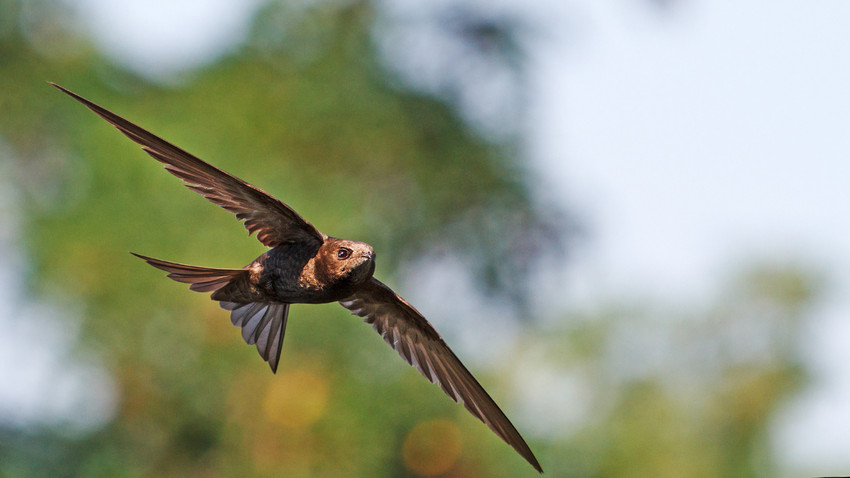
The Common Swift's Uncommon Lesson
I listened to a fascinating report by Charles Osgood on his “The Osgood File” this week. Researchers at Lund University (Sweden) have been studying the flight patterns of the common swift, that black ubiquitous bird (about the size of a barn swallow) found across Europe and the United Kingdom. Scientists have long expected that swifts spent much time in flight, but not this much!
Mounting tiny electronic sensors on 19 swifts, biologists began tracking their flight time. And when the numbers were compiled over a period of two years, they discovered that the common swift can spend up to ten months in the air. Without stopping! Fly an airline from Chicago to Sydney, and you’re looking at over 17 hours in the air (without stopping). But these small creatures are now tracked spending two months shy of a year in constant flight. (Researchers did note a possible half a percent of those ten months on the ground in the event of storms, et al.)
Ten months of non-stop flying? When in the world (or above the world) do they sleep? The embedded sensors on the swifts indicate that at both dusk and dawn these small birds ascend to 10,000 feet and stop their wing flapping, as they begin a long slow glide earthward. Those two glides (an hour in length each) apparently are the “power naps” that provide the swifts with enough rest each day to keep flying. For ten months.
“Lead researcher Anders Hendenstrom, professor of biology at Lund University, said: ‘It’s mind-boggling that they can stay airborne for 10 months without needing to come down. Most of the time there is a trade-off between energy use and life: live hard and die young. But these birds live quite long, up to 20 years, so somehow they have beaten this rule’” (www.telegraph.co.uk/science/2016/10/27/common-swift-sets-new-record-by-staying-airborne-for-10-months-a/).
The lesson for us? If you’re not sleeping through these first days of the New Year, then you well know that our world (this civilization) is navigating some of the most turbulent times in memory. The mini-storms across the planet are fast merging into a global storm of eventually epic proportions. “We are on the verge of a stupendous crisis” (Education 179). No wonder Jesus with prescient foresight warned those living near the end:
“Be careful, or your hearts will be weighed down with carousing, drunkenness and the anxieties of life, and that day will close on you suddenly like a trap. For it will come upon all those who live on the face of the whole earth. Be always on the watch, and pray that you may be able to escape all that is about to happen, and that you may be able to stand before the Son of Man” (Luke 21:34-36).
Again and again He admonishes His followers to “watch and pray”—and in this case “be always on the watch, and pray.” Is the Master suggesting that like the common swift we “fly” without sleep? Hardly. But He is clear enough that living in a predicted time of epic storms will necessitate a commitment to extended praying. Living in this nation and world, we have long passed the “business as usual” demarcation. Welcome to the “watch and pray” storm zone.
If you would like to join with others in collectively watching and praying, Pioneer now offers two “watch and pray” zones each week: Wednesdays at 7:00 AM (Youth Chapel) and 7:00 PM (Sanctuary). Pastors will be on hand to guide and join this “watch and pray” experience. I hope you will either begin or end your Wednesdays praying with us. But not just on Wednesdays, rather like the swift let’s keep our hearts ascending to our God and Savior all week long, interceding for those we love, for those we know—for this storm-bound church and world.
Let us swiftly “watch and pray.”